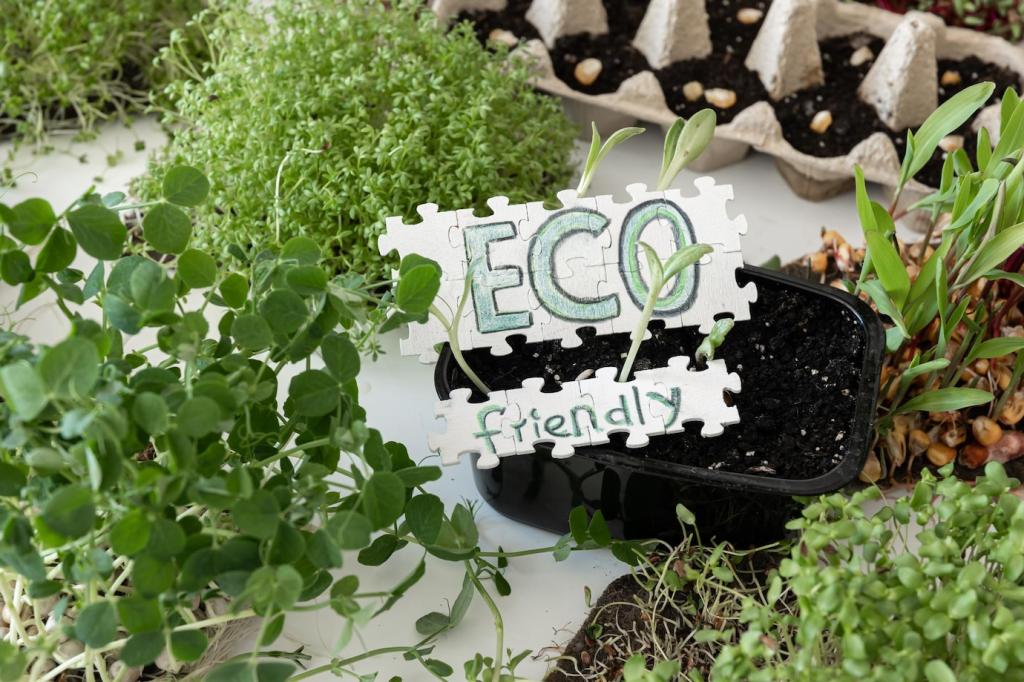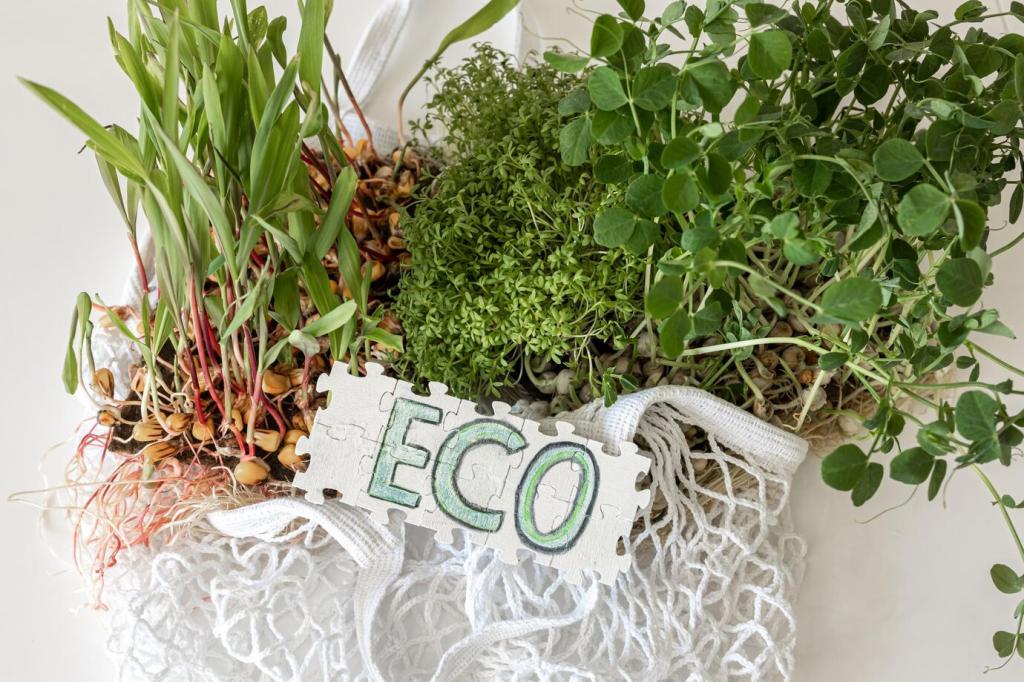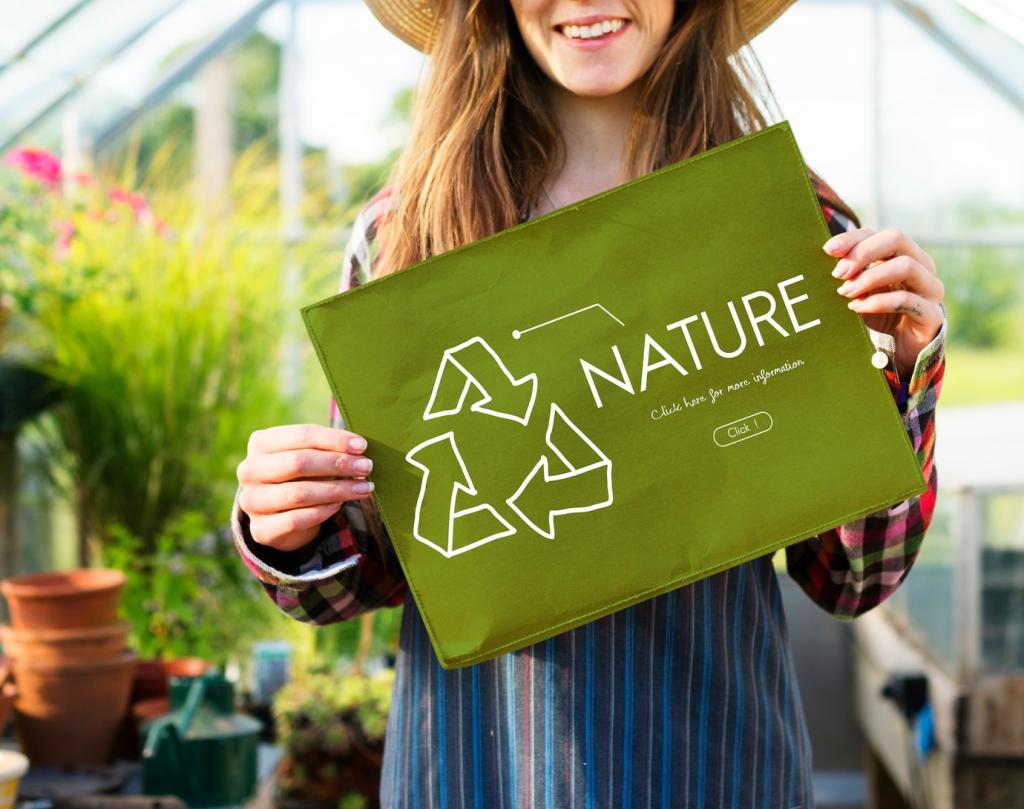
Choosing Environmentally Responsible Furniture Brands: A Warm Guide to Furnishing with a Clear Conscience
Chosen theme: Choosing Environmentally Responsible Furniture Brands. Welcome to a friendly space where style meets stewardship, stories spark action, and every chair, table, and sofa can reflect your values. Dive in, ask questions, and subscribe for ongoing, practical insights on better buying.
What “Environmentally Responsible” Really Means in Furniture
Certifications that signal real progress
Look for recognized third-party standards like FSC and PEFC for wood, GREENGUARD Gold for low emissions, Cradle to Cradle for circular design, and B Corp for overall governance. These do not guarantee perfection, but they raise the floor, reduce guesswork, and help you compare brands with confidence.
Materials that respect forests, soils, and air
Favor solid FSC-certified or reclaimed wood, rapidly renewable bamboo, natural latex, wool, linen, and GOTS-certified organic cotton. Recycled aluminum or steel lowers footprint, and water-based, low-VOC adhesives and finishes protect indoor air. Share your favorite sustainable material with us and why it matters in your home.
Designing for longevity and repair
Responsible brands design for decades, not seasons. They offer replaceable covers, modular parts, strong joinery, and repair guides. My neighbor Maya kept a beloved sofa for twelve years because the brand sold spare legs and new slipcovers, turning potential waste into a renewed centerpiece with character.
Decoding Labels and Standards Without a Headache
Both FSC and PEFC promote responsible forestry, reduce deforestation risks, and encourage biodiversity. FSC is often considered the stricter, globally recognized benchmark, while PEFC endorses national systems. Either way, certification plus traceability documentation beats unverified claims like responsibly sourced wood every time.


Decoding Labels and Standards Without a Headache
GREENGUARD Gold and similar standards limit chemical emissions so your home air stays cleaner. Water-based finishes and low-VOC adhesives reduce off-gassing. If a brand touts non-toxic without specifics, ask for their emission test report or exact standard. Your lungs will thank you for the extra diligence.
Supply Chains, Energy, and Carbon: Seeing the Bigger Picture
01
Trustworthy brands share supplier locations, photos, and audit summaries, sometimes even QR codes that trace wood species and origin. They disclose compliance with laws and independent checks. When a company says carefully sourced but shows nothing, reply kindly asking for sourcing documents. Real partners will respond transparently.
02
Factories running on on-site solar, renewable energy contracts, or high-efficiency equipment cut significant emissions. Closed-loop water systems and safe wastewater treatment protect local ecosystems. Ask brands which percentage of their manufacturing energy is renewable and how they manage water; concrete metrics indicate real investment, not slogans.
03
Science-based targets aligned with credible frameworks show ambition grounded in data. Reducing emissions beats offsetting, but when offsets are used, they should be additional, verified, and time-bound. Look for progress updates, not just net-zero declarations. Share which climate commitments impress you, and help grow our community checklist.
Material Deep Dive: Wood, Foams, Fabrics, Metals, and Glass
Choose solid FSC-certified or reclaimed wood where possible. For engineered boards, check for low formaldehyde emissions like TSCA Title VI compliance or European E1 standards. Ask about non-toxic glues and finishes. Brands that offer species transparency and repairable joinery usually build pieces meant to be cherished.

Circularity in Action: Buy Well, Use Long, Recover Value
Take-back, repair, and refurbishment programs
Ask whether the brand repairs, refurbishes, or buys back used items. Some resell certified pre-owned pieces or partner with local workshops to extend life. These programs keep furniture out of dumpsters and save you money. Share any repair-friendly brands you admire so others can discover them too.
Modular furniture and replaceable covers
Modular frames with standardized hardware make fixes simple. Replaceable slipcovers refresh style without tossing a sofa. Swappable tabletops or legs adapt pieces as your space changes. Tell us which modular solutions have worked for you, and we will compile the most useful tips in a subscriber-only guide.
Care routines that truly extend lifespan
Small habits matter. Rotate cushions, tighten screws seasonally, wax wood lightly, and spot-clean with gentle products. Keep furniture out of harsh sunlight when possible. The best sustainability story is the one you keep writing with good care, year after year, memory after memory.
Smart Shopping: Budget, Questions to Ask, and Red Flags

Prioritize impact where it counts
Focus spending on durable, high-use items like sofas, dining tables, and mattresses. Consider certified factory seconds or gently used pieces. Pair simple, timeless designs with repairable components. Share your budgeting strategies, and subscribe for monthly checklists that rank actions by cost and environmental benefit.

Questions to email or message a brand
Ask where the wood comes from, which certification applies, and whether finishes are low-VOC. Request the factory location, renewable energy share, and repair parts availability. If they claim recycled content, ask for percentages and sources. Screenshots their replies and tell us what you learned to help others.

Greenwashing clues and dependable transparency
Be cautious of phrases like eco-friendly or natural without data. Seek measurable goals, audit summaries, and clear certificates. Brands publishing supplier lists, life-cycle insights, and annual progress reports deserve extra credit. Comment with any transparency reports you admire, and we will feature community favorites next week.
A Short Story and Your Turn to Share
Maya saved for an FSC-certified oak table finished with water-based lacquer. Delivery took longer, but the brand shared factory photos and energy data, which felt reassuring. Two years later, the table hosts homework, birthdays, and late-night tea. Every scratch now tells a story worth keeping, not replacing.
A Short Story and Your Turn to Share
Before buying, verify one certification, ask two sourcing questions, and confirm one repair option. Photograph labels for records. Subscribe to receive our printable checklist and a monthly brand spotlight comparing materials, emissions, and circular programs. We will update it using insights gathered from your shared experiences.


